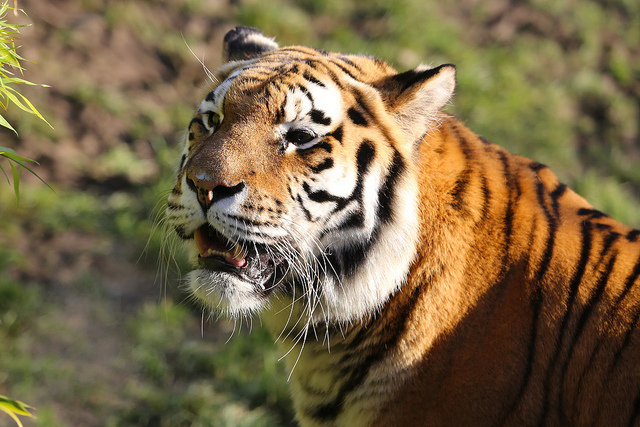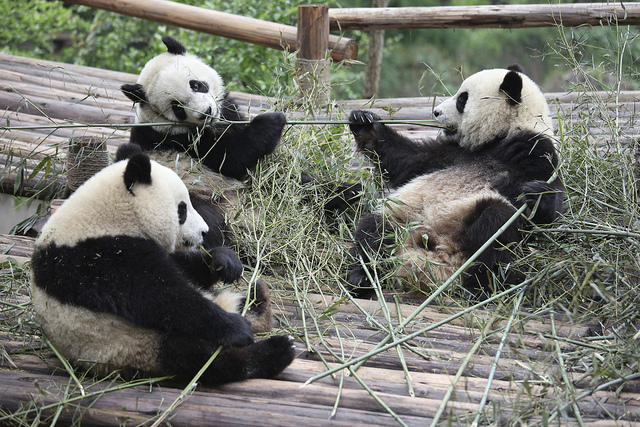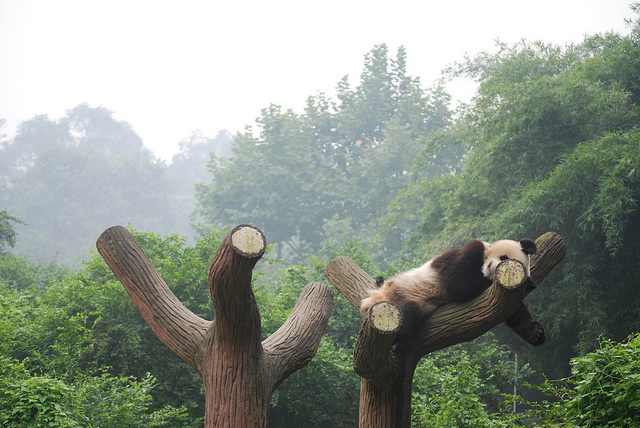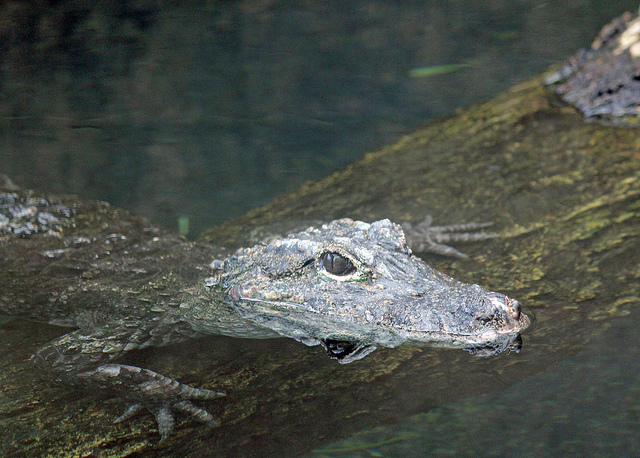Is there anything more recognisable and symbolic than the giant panda?
The enormous yet somehow cuddly animal serves as a symbol of its Chinese homeland. It has spawned an animated franchise, as well as millions of souvenirs and knick knacks. But, the panda is also a modern day symbol for the importance of organised and concerted animal conservation efforts. It has become a symbol for organised efforts to protect threatened animals.
As a large, ecologically diverse country, China is home to a wide variety of exotic animals. And although many native Chinese species are threatened with declining populations, the country actively works with the help of international support to restore their animals to their former populations and glory.
An uplifting part of guided tours through China, there are a number of ways to enjoy the local wildlife. More importantly, there are also so many ways to actively participate in the support of threatened species – no matter where you are from.
Let’s go see the animals…
Pandas and China
At a panda research facility in Chengdu, they take their conservation very seriously. The Research Base of Giant Panda Breeding says it recognises the importance of the animal as a visual representation for animal conservation around the world. A tour of the facility is available here.
According to National Geographic, bamboo plants account for 99 percent of the panda’s diet. And pandas are hungry – they eat as much as 12 hours a day. Because of shrinking supplies of bamboo on the animals’ native habit in the mountains of Central China, their wild population has steadily declined. There are an estimated 1,600 giant pandas left in the wild. Today, the giant panda is one of many species protected by the Chinese government.
Panda conservation has spread well beyond the borders of China. Panda conservation is also an important part of the World Wildlife Fund and the animal even serves as part of the group’s famous logo. There are many other dedicated organisations across the globe as well. Based in the United States, Pandas International focuses on working to ensure the survival of the species. They work directly with the various conservation groups in China.
They directly provide medical equipment, supplies, and medicines to help promote successful breeding. The group relies on donations for its funding. Their support goes to helping raise funds for incubators, baby panda formula, and panda toys. The group was started after its now-director Suzanne Braden and organisation co-founder Diane Rees went on a trip to China and encountered the Giant Panda Reserve at Wolong.
Captive Breeding Programmes
“Despite all of the challenges of breeding Pandas in captivity, the past 10 years have seen dramatic increases in the number of successful captive births,” Panda International says. “Much of this success comes from the development of behavioural management strategies, guided by the application of scientific knowledge. There are over 300 Pandas now in captivity which is considered the minimum number for sustaining the population.”
A leader in the field of panda breeding, the Chengdu centre has been able to facilitate the birth of 400 cubs. Scientists and experts have debated the success of Chengdu’s programme, but the centre remains a beacon in China in the active protection and promotion of the animal.
Pandas International is actively supporting the construction of a new breeding facility at the new Wolong Nature Reserve and Panda Reserve in Gengda. The new facility will contain a state-of-the-art research centre and breeding facility in Shengshuping, the group said. There will be a large reintroduction training area in Huangcaoping. The long-term goal is that captive-born pandas can be released back into the wilds of China.
Environmental reclamation
Although breeding programmes are important, most conservationists agree that protection of natural resources is vital to the panda’s survival. Bamboo becomes a key feature in reclaiming the habitat of the animals. A plentiful and stable supply is key, Pandas International says.
The group has invested a great deal of attention in helping to build up the Wolong Nature Reserve to become a stable supply of bamboo. The Wolong reserve is part of the larger Sichuan Giant Panda Sanctuaries. Sichuan is home to more than 30 per cent of the world’s pandas. The area covers over 2 million acres. It contains seven nature reserves and nine scenic parks in the Qionglai and Jiajin Mountains.
Officials in China hope that employing local farmers to help plant bamboo plants will not only aid the panda population, but improve the local economy as well. Land management requires active planting and management of the bamboo, prevention of livestock encroachment, and supply transportation. Together, officials are hoping for a joint, sustainable effort. It is estimated that the project will take five years to complete.
More than just pandas
Conservation of local species goes beyond just the familiar panda. At the Wildlife Conservation Society (WCS) in China, they are committed to helping other local species that find themselves in danger.
The Amur Tiger has fallen to a wild population in the southeast of China of about 20. There is also the most endangered member of the crocodile family – the oddly named Chinese Alligator. Estimates put the population of the reptile at 120. They once called the lower Yangtze River home, but declining water levels due to farming and reduction of wetlands have cut their numbers.
The WCS also looks after programmes designed to help protect the Wild Yak, the Tibetan Antelope, the Saiga Antelope, and the Pangolin.
 Plan a holiday to China with the UK’s leading China Experts, Wendy Wu Tours. Our award winning escorted, fully inclusive tours visit all the major sights of China for an unforgettable holiday.
Plan a holiday to China with the UK’s leading China Experts, Wendy Wu Tours. Our award winning escorted, fully inclusive tours visit all the major sights of China for an unforgettable holiday.
Image Credit: Ryan Quick, Toon Bronselaer, DaiLuo, Aaron Logan, Ronnie Macdonald


























